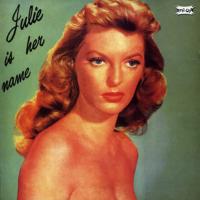Before Norah, Diana and Jacintha, There Was Julie!
Before there was Norah, Diana, Patricia, or even Jacintha, there was Julie London. Just as audiophiles today seem to gravitate towards sexy, breathy singers, audiophiles in the mid-fifties found themselves inextricably connected to Ms. London, thanks in great part to the Liberty Records original ((LRP-3006), issued December, 1955.
Yes, it’s that old, but I defy you to find a better sounding recording of a female voice than what’s on this remarkable monophonic record. If your system is up to it, you won’t hear tape, you won’t hear vinyl, you won’t hear a recording. Instead, you’ll hear London suspended in three-dimensional reality between your speakers, standing in front of the microphone.
This record will come to you from the other side of the recording chain. That’s how transparent it is and how superbly it’s been remastered from the original tape. These are big, intimate images, particularly London’s. She’s just about in your lap. Better her than Barney Kessel, right?
It’s just London, backed by guitarist Barney Kessel and Ray Leatherwood on bass. Bobby Troup, the guy who wrote “(Get Your Kicks) On Route 66,” originally a hit for Nat ‘King’ Cole and later for Chuck Berry and much later foir The Rolling Stones, produced the album.
London was married at the time to “Dragnet” star and producer, the visionary Jack Webb. Visionary? Every “Law and Order,” “CSI”whichever crime show you want to name, derives from the “Dragnet” formula.
London’s sexy “come hither” must have gotten to Troup and Troup must have gotten to London, because in 1960 Webb and London divorced and married Troup. They stayed together until his death in 1999. She passed away the next year.
There’s much more to the story, but back to the record! If your system is up to it, London, Kessel and Leatherwood will each inhabit a distinct space. Granted the lineup is one in front of the other, since it’s mono, but each image will mesmerize with three dimensionality, believable textures and superb microdynamic subtlety.
No doubt the very smart and talented Troup (graduated from the Wharton Business School at the University of Pennsylvania, was hip to high fidelity. He, or someone involved in the project figured out that a hi-fi record could bring the performers into the listener’s room instead of being a capture of an event occurring in an external venue.
This record was either the first to produce that illusion, or one of the first to do so, but it created an immediate sensation and probably helped sell a lot of hi-fi systems. The original liner notes call it “…an intimate, sleek and sultry production.” That’s definitely what it is, with London using the microphone to whisper in your ear.
The opener, “Cry Me a River” will tell you everything you need to know about the 12 songs to follow and that’s one of the problems with the record: after a few songs, you may have had your fill. Having the album divided among four 45rpm sides is actually beneficial: a side or two may be enough and then later you can go back for more. Or if you are sufficient smitten, you can go through all four sides.
Neither the concept nor the performance has dated. They are as fresh as anything done today. The same can’t be said about the recording quality, however. It’s better than most anything recorded today. How sad. But how great that Julie Is Her Name is again available on vinyl, sounding better than ever!
- Log in or register to post comments


